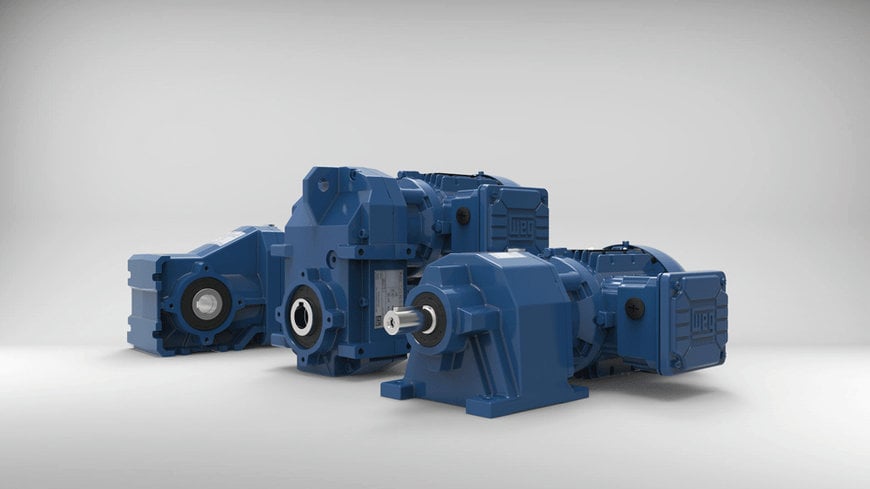www.magazine-industry-usa.com
09
'21
Written on Modified on
Popular gear types used in industrial machinery
Gear units categorised by key features.

Helical gears, bevel gears, parallel shaft gears and worm gears each account for 20 percent of the global industrial gear market. Despite the market dominance of these four gear types, choosing a gear unit involves several design factors that depend greatly on the application and operating conditions. Here, Marek Lukaszczyk, European and Middle East marketing manager at motor and drive manufacturer WEG, introduces each gear type along with their defining features.
Gears are among the most important elements used in industrial machinery — often used in conjunction with an electric motor. Their main purpose is to transmit the right amount of force to ensure the smooth running of a machine. The right gear type also allows deceleration without negatively impacting and stressing the mechanics. With all this to consider, how do manufacturers know which gear type to use?
Helical gears
Helical gears are among the best-known gear types and are the most cost-effective. The teeth on a helical gear cut at an angle to the face of the gear. When two of the teeth start to engage, the contact is gradual — starting at one end of the tooth and maintaining contact as the gear rotates into full engagement. This gear unit has a longer design meaning it is used where sufficient space is available. This is mainly due to the way that the input and output axes are arranged in one line.
Bevel gears
If the axial installation space is limited, a bevel gear is typically used. Bevel gears are used on shafts with intersecting axes, and in some cases on shafts where axes do not intersect. These are used to change the direction of a shaft’s rotation.
Among defining characteristics, bevel gears have teeth that are available in straight and spiral shapes. If the tooth profile is straight then teeth of two mating gears come in sudden contact that imposes impact load on the tooth increasing vibration, noise, and wear rate. Teeth that are cut in the form of a spiral curve of the bevel gear blank can offer gradual contact. This minimises the detrimental effects of straight teeth and offers a longer gear life.
Parallel shaft gears
Parallel shaft gears are usually a multi-stage helical gear unit with parallel shafts, compromising of an output shaft, which allows the gear to have an easy accessibility to mount onto an existing shaft. The input and output shafts are offset and parallel to each other — as far as possible, compared to the conventional helical gear. Due to their design, their axel dimensions are compact and therefore good at saving space.
Worm gears
Despite their low level of efficiency, worm gears are commonly used due to their wide range of applications and large ratios. By design, the worm gear consists of the worm and worm wheel. Just like the bevel gear, the input and output shafts are set at a right-angle position. Also, the number of teeth in the gear wheel corresponds to the number of gears in the worm.
As multiple teeth of the wheel may be engaged at the same time, high torques can be transmitted with this unit. Despite this, these gears can operate quietly due to the continuous sliding. Lubrication and additional cooling for high power outputs can result in better efficiency to combat friction on the flanks of the worm and wheel.
Choosing a gear unit that works well with your application is a priority. These four main gear types can cover a wide range of operational functions within machinery, which can be modified and adapted based on bespoke needs.
WEG has developed its first geared motor range in-house. The WG20 geared motor series comprises helical, parallel shaft or bevel geared motors — including customised drives and worm gears. For more information visit www.weg-wg20.com.
www.weg.net

